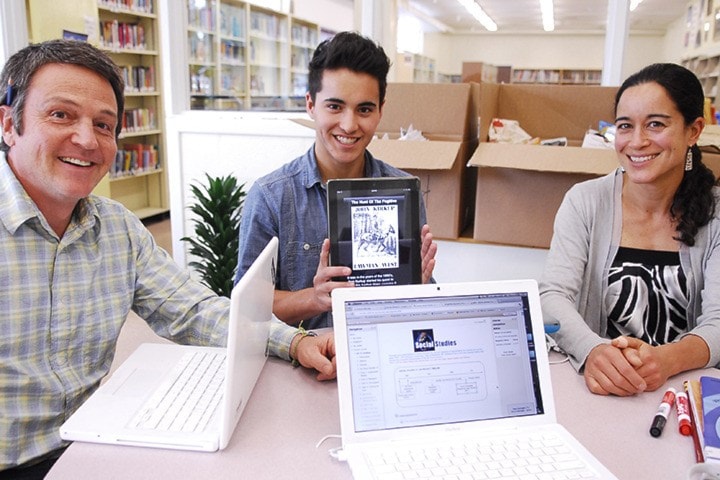The past met the present for the future as Grade 10 students at Rossland Secondary School created a legacy for the entire city.
Through a social studies class in the school's blended learning program, 24 students created augmented reality historical tour through the school's Grade 10 social studies class, bringing the city's history to life through an interactive online program.
The brainchild of biology teacher Bernie Hofmann and teacher librarian Nicola Kuhn, the dry aspect of the subject was brought to life through the use of technology.
“Social studies is often difficult to teach from a text book. Kids don't connect and they often find it dry,” said Kuhn.
“History is one of those things that is challenging at times to make it relevant and connected,” Hofmann added.
The idea was simple: create a walking historical tour of the city, accessible by clicking on an iPhone “app,” revealing a map and information on historical areas and aspects of the city.
Back in fall, Rossland Museum's Libby Martin approached the school to get student input through consultant Mike Stolte, and received feedback from half dozen students on museums and what works and what doesn't.
The move made Kuhn and Hofmann realize that not only could the museum be a resource for students, but students could be a resource for the museum.
They thought they could use students to generate interest in Rossland history and, in turn, the Rossland museum itself.
Using the idea of augmented reality from places like the Calgary Science School and other museums, Kuhn and Hofmann found Aris, a free and easy to use iPhone program that was location based.
Through the program they were able to merge the idea with learning outcomes of social studies 10.
“So if we were able to cover that curriculum through the lens of Rossland, then it's a way of tying kids to the community, going more in depth on a topic, and also creating authentic learning,” said Hofmann.
It was learning that had some longevity, learning that was more than just a report that they produced for a teacher for a mark that will never be seen again, he added.
“They are producing something now that the public will be able to enjoy and will benefit the community for years as long as this app remains active,” he explained.
In the project students were allowed to focus in on an area of interest, so it personalized it for them, said Kuhn.
“And because they didn't have to be in a set classroom for a certain part of the day, they were able to go to the museum as often as they wanted,” she said.
Although neither Hofmann nor Kuhn were social studies 10 teachers, they wanted to collaborate on project and thought it would fit the curriculum. Blended learning allowed for teacher collaboration.
The students tackled several important historical areas, including the three major fires that hit Rossland in 1900s, historical buildings, mining, skiing, saloons and brothels, Chinese gardens, ladies of the night, banks of early Rossland, the role of immigration to Rossland, sports, John Kirkup and father Pat.
“Any time you can connect kids to their learning they are winning,” said Hofmann.
Students started the project in February and created outline for course, did research in March and April, worked on writing the tours in May, and then went live in June.
Hofmann hoped the chamber of commerce and Tourism Rossland would help promote the new program.
People can download Aris app, then click on “nearby tours” and “list of tours” to find Rossland and then all of the student's tours will come up.
editor@rosslandnews.com
